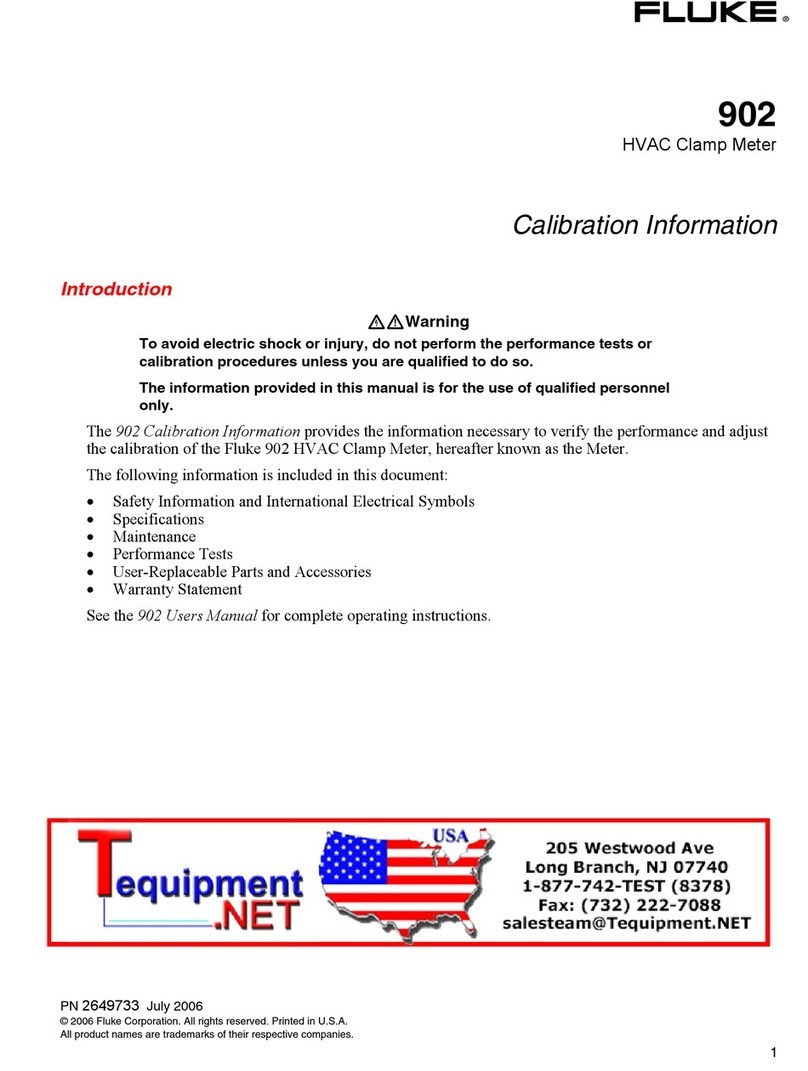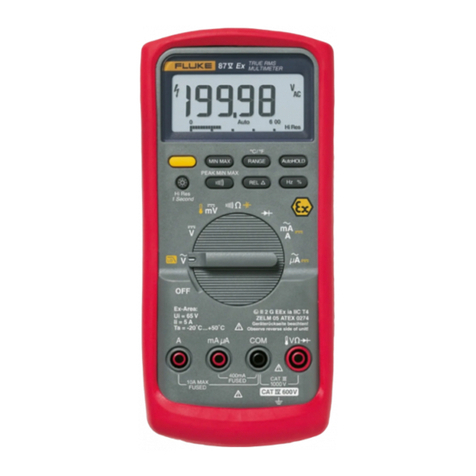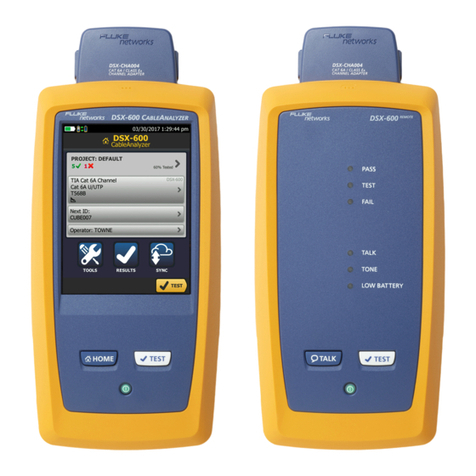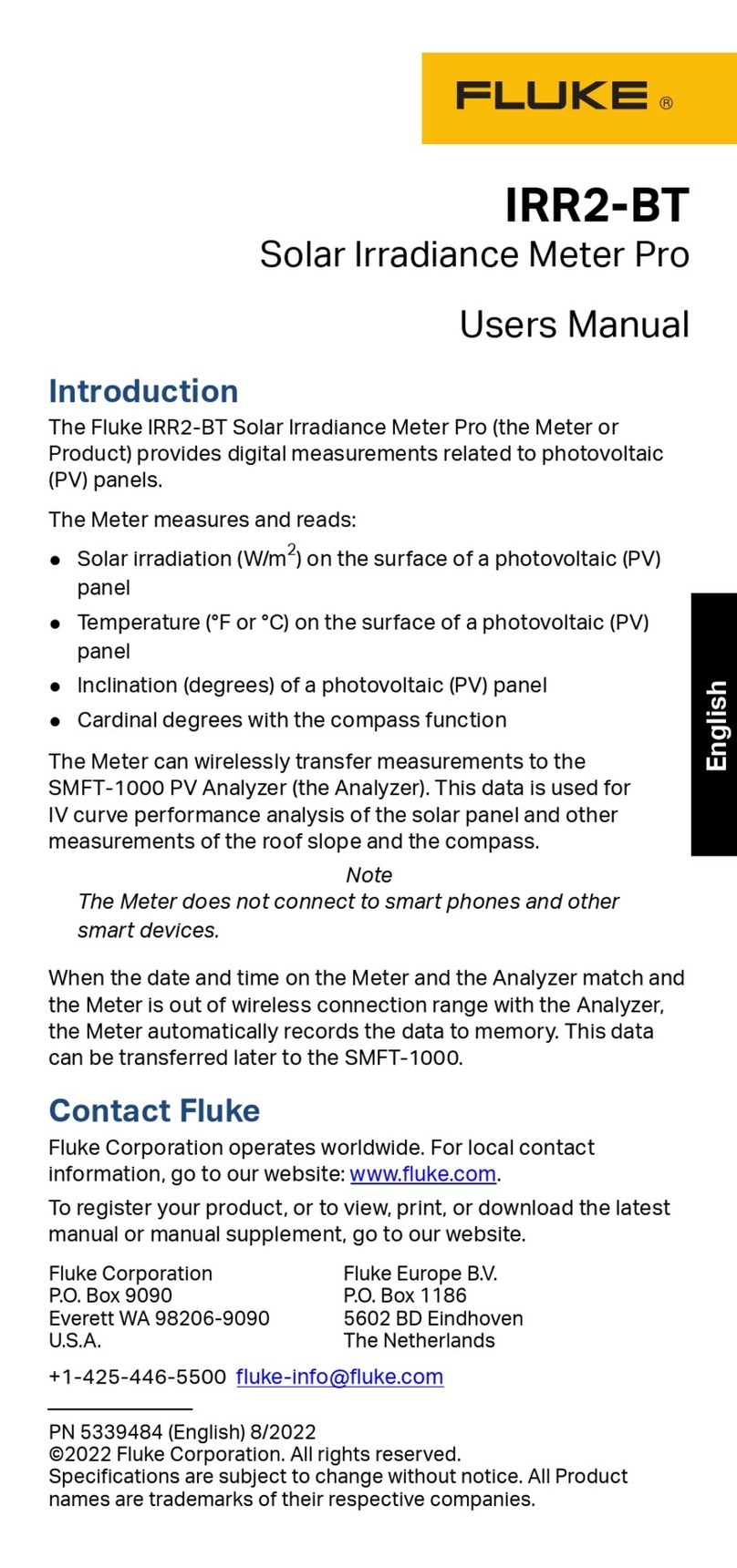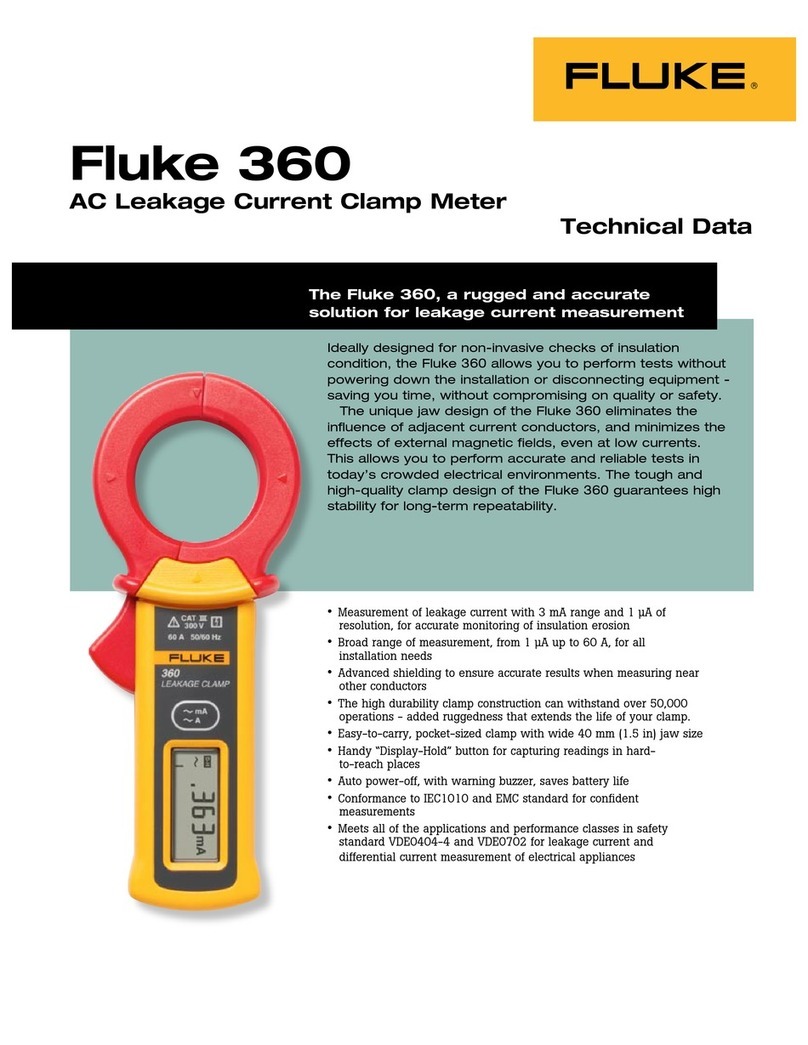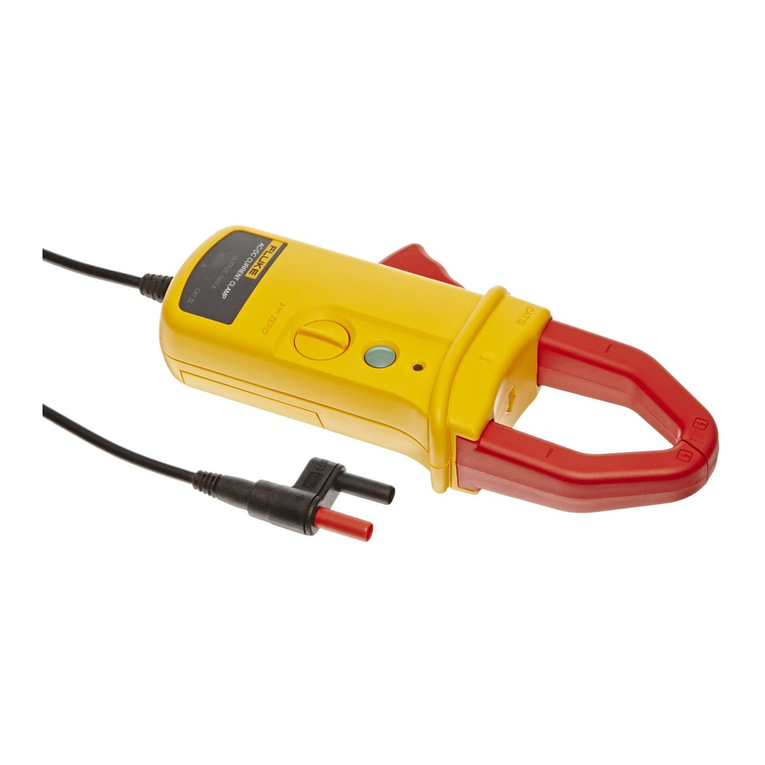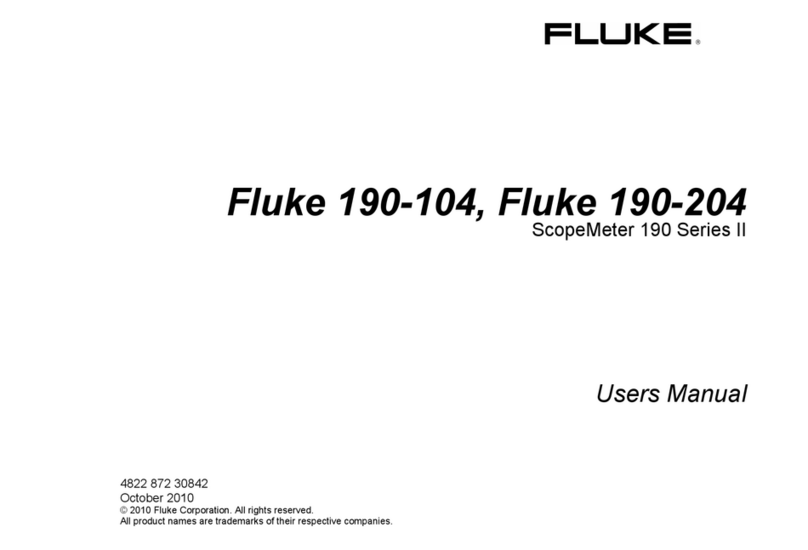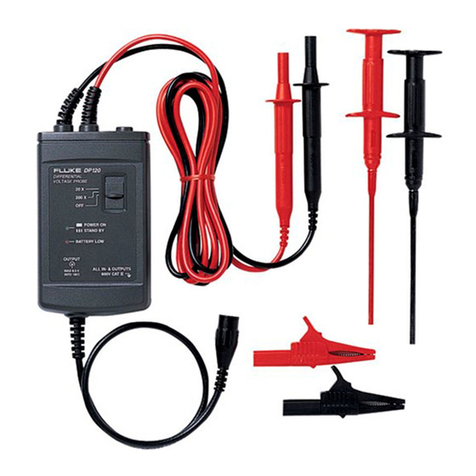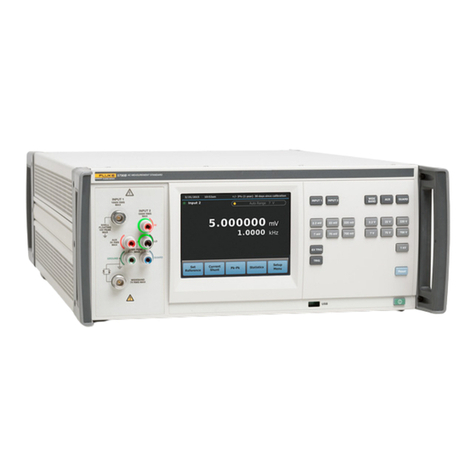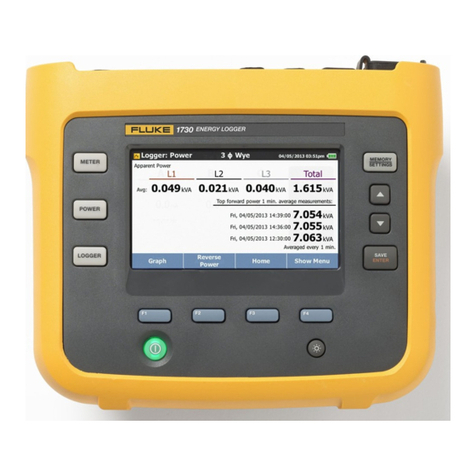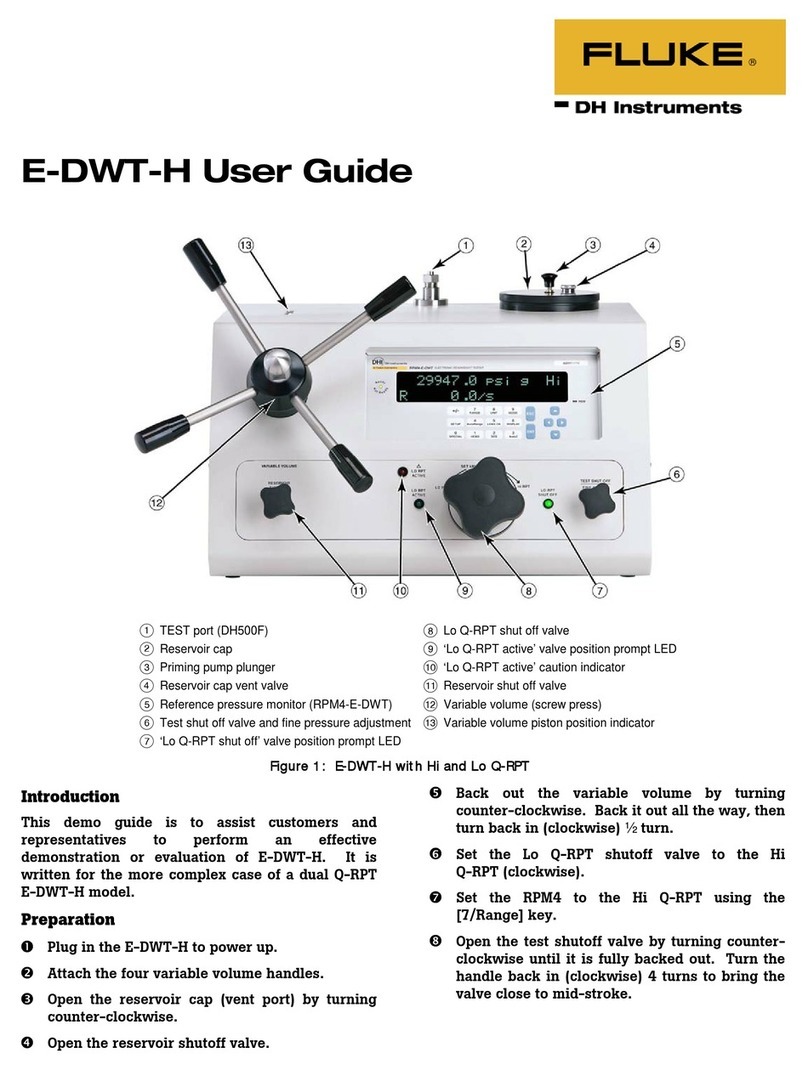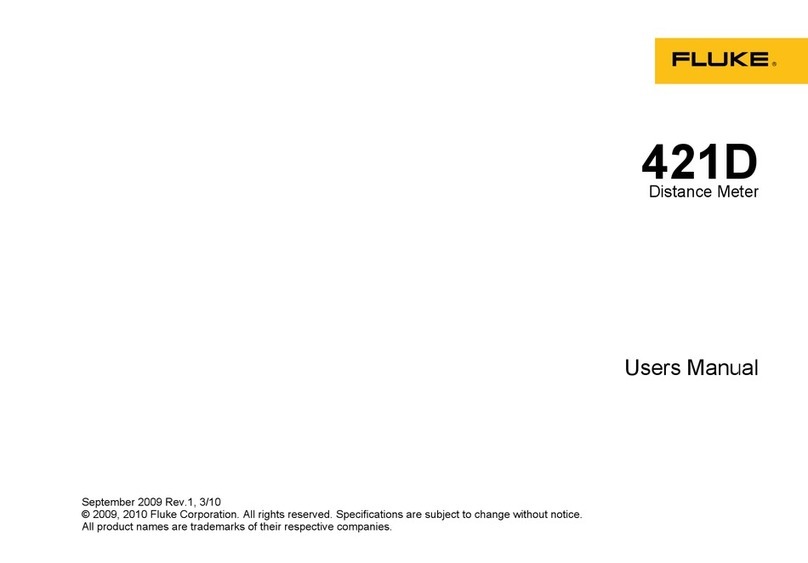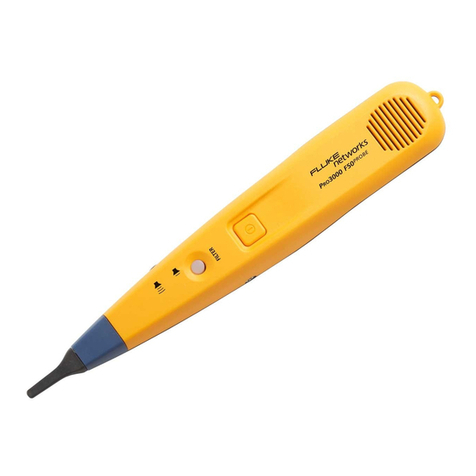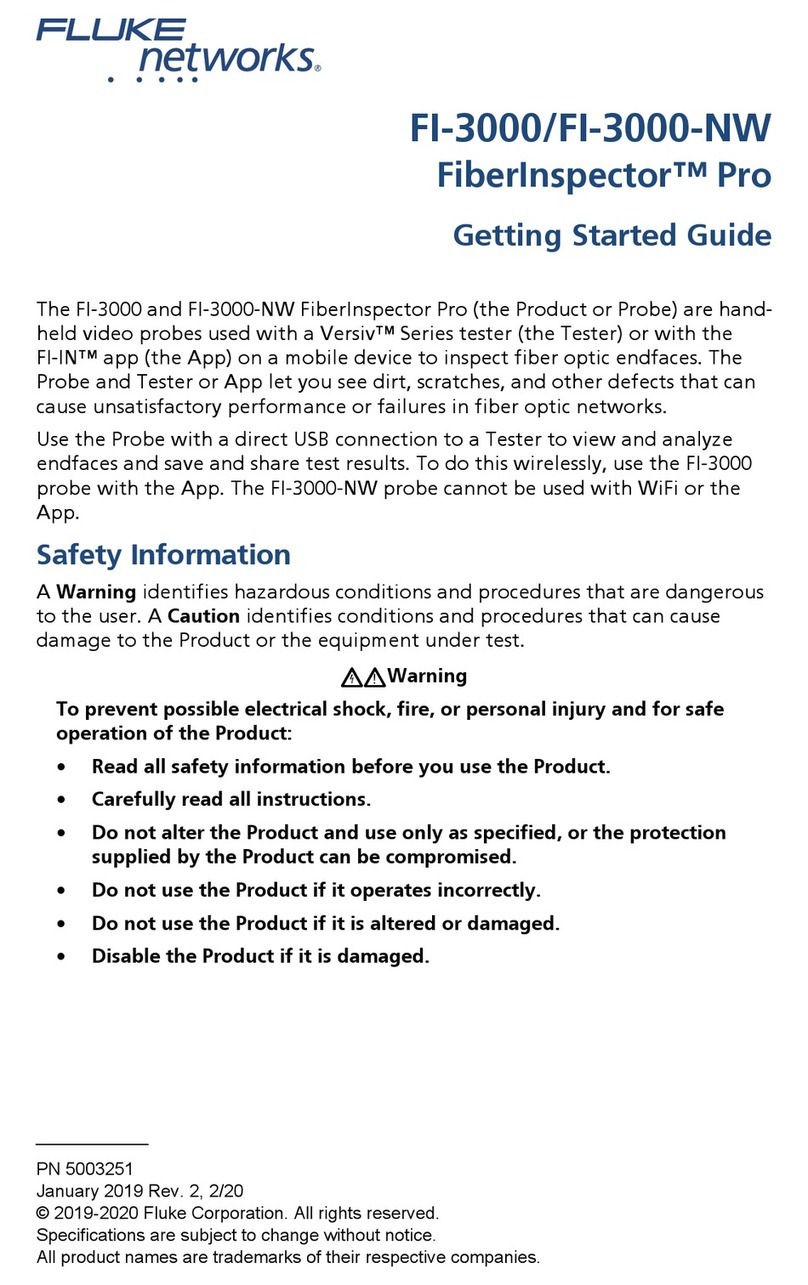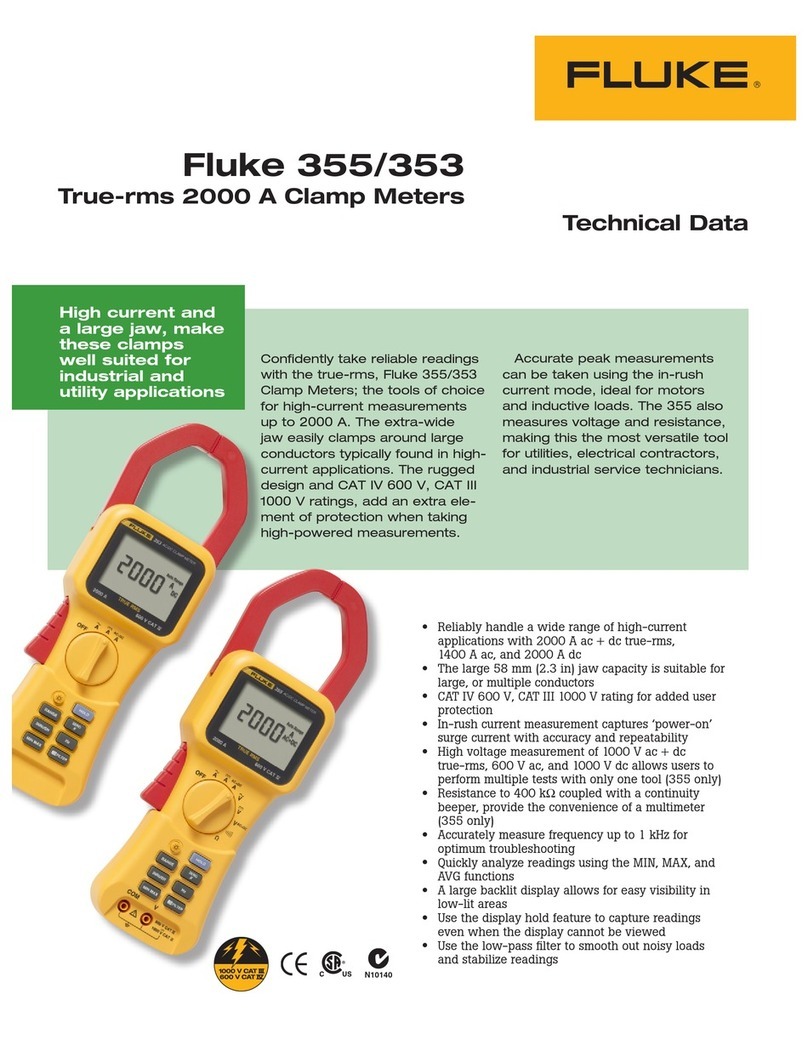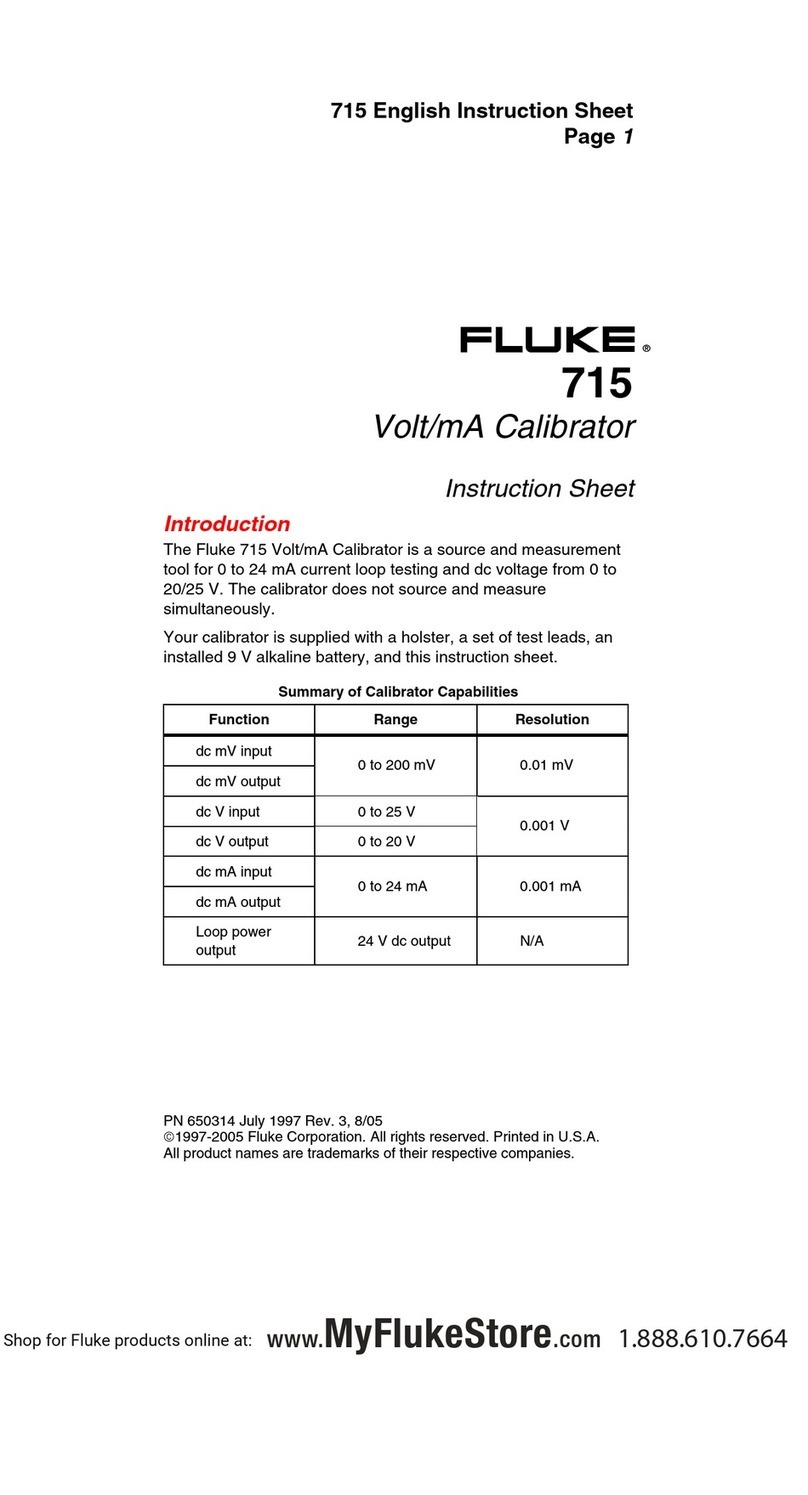2 Fluke Corporation 101 applications for laser distance meters
Facilities: Safety
16. Measure distances (includ-
ing ceiling heights) to install
emergency lighting, sprin-
klers, and fire extinguishers
to code.
17. Determine accurate room
dimensions to ensure correct
chemical concentration for
Clean Agent Fire Suppression
system.
18. Measure distances from
machines for safety equip-
ment (fire extinguishers, fire
blankets, etc.).
19. Measure water levels in fire
suppression tanks.
Facilities: Other
20. Use in setting up floor sup-
ports in large communication
rooms.
21. Measure room dimensions to
calculate how much paint is
needed.
22. Measure room dimensions
to calculate how much floor
covering is needed.
23. Measure height for appropri-
ate ladder selection.
24. Document location of stand-
ing water or leaks found
with a thermal (IR) imager or
infrared thermometer.
Electrical: Cable
25. Measure distances for linear
length of wire or cable runs.
26. Measure distances for linear
feet/meters of conduit
needed for new installations.
27. Measure height of high volt-
age lines to meet clearance
requirements.
28. Calculate total length needed
in setting up wire assemblies
and harnesses.
29. Measure distances to calcu-
late voltage drops (in power
supply).
30. Measure depth, distance of
underground conduit.1
31. Determine length of wire
available on hand.
32. Measure distances of under-
ground cable1from various
landmarks or obstacles/
known hazards.
33. When locating underground
cable with a transmitter/sen-
sor tool combo, trace down
cable and shoot back with
distance meter.1
34. Locate underground cable
faults1using the A-frame
method. Tell the exact dis-
tance of fault from starting
point without tape measure
or trundle wheel.
Electrical: Ceiling/Floor
35. Measure distances to objects
within hard-to-reach drop
ceilings to determine over-
head cable runs, line of sight.
36. Measure ceiling height and
square feet/meters to deter-
mine rod lengths for drop
ceiling installation and light-
ing fixtures.
37. Measure distance under
subfloors or structures for
networking or other cable
installations.
Electrical: Safety
38. Measure distances from
power system devices (trans-
formers, etc.) for electrical
safety/arc flash protection
and power studies.
Electrical: Other
39. Measure disconnect place-
ment for spas and pools.
40. Measure distances between
electrical service poles.
41. Ascertain distance around
walls for proper receptacle
placement per code.
42. Decide where to place power
drops/connections to the
power supply in manufactur-
ing floor layouts.
43. Measure electrical room
square feet/meters for regu-
lation verification.
Industrial Maintenance:
Conveyors
44. Determine conveyor belt
length (for/at installation).
45. Calculate conveyor belt
capacity, based on length.
Industrial Maintenance:
Layout
46. Measure distance between
machines to estimate heat
loading.
47. Determine equipment
ventilation requirements
(mass air flow).
Industrial Maintenance:
Tanks
48. Check tank level2and
verify accuracy of tank level
transmitters.
49. Measure water level at
power plant water intake.
Industrial Maintenance:
Other
50. Check calibration of auto-
mated product shuttle
distance sensors.
51. Align large welding fixtures.
52. Determine the volume of
industrial ovens used in
powder coating, etc.
Measuring height to tall ceiling.
1 Laser measurement outdoors can be
compromised by direct sunlight.
2 Do not use laser measurement tools in
the proximity of flammable materials.
